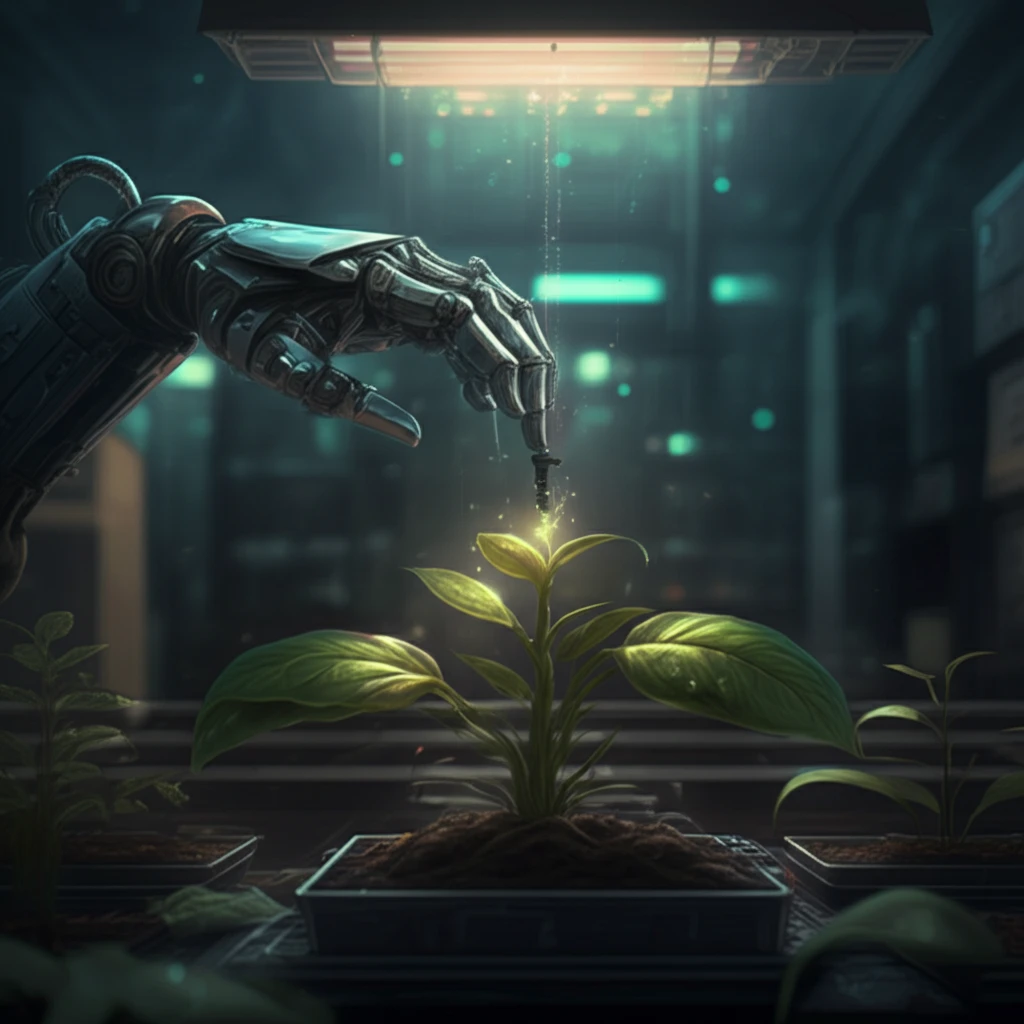
Smarter Watering: How Robots are Revolutionizing Indoor Plant Care
"Discover how automated systems using the Toyota HSR robot can precisely adjust drip irrigation for healthier indoor plants and reduced water waste."
Indoor plants, gracing homes and commercial spaces, thrive with meticulous care. Precision irrigation—supplying the right amount of water—is key to vigorous growth and water conservation. Traditional methods often fall short; manual adjustments of drip emitters are imprecise, and active irrigation valves prove costly. But what if a robot could step in to automate this crucial task?
Enter the Toyota HSR (Human Support Robot), equipped with innovative technology to autonomously adjust low-cost, passive drip emitters. This mobile manipulator boasts a custom-designed Emitter Localization Device (ELD), featuring cameras and LEDs. The ELD allows for accurate gripper alignment, ensuring emitters are perfectly adjusted for optimal water delivery. This approach not only promises healthier plants, but also significantly reduces water consumption.
This system utilizes a two-phase procedure: first, the robot's base aligns using its built-in hand camera. Next, the ELD aligns the gripper axis with the emitter axis. The result? Highly precise adjustments with a 95% success rate in approximately 20 seconds. Let’s explore the future of indoor plant care, one automated adjustment at a time.
The Science Behind Automated Irrigation

Drip irrigation is a widely used agricultural method where water is delivered directly to plant roots through a network of tubes. Adjusting the flow rate of drip irrigation emitters allows for tailored water delivery to meet each plant's specific needs. This precision is especially crucial indoors, where environmental conditions can vary dramatically, even among plants in close proximity. Factors such as morphology, lighting, airflow, and drainage can all influence a plant's water requirements.
- Cost-Effective: Adjustable passive flow-rate drip irrigation emitters cost under $0.30.
- Autonomous Adjustment: Robots can position themselves, grasp emitters, and rotate the cap to the desired angle.
- Custom Sensing: The Emitter Localization Device (ELD) is a custom sensing and lighting system mounted on a manipulator.
- Vision and Control Algorithms: Algorithms enable robots to autonomously reach and grasp emitters.
The Future of Robotic Plant Care
With a 95% success rate in approximately 20 seconds per emitter, this technology has significant promise for improving indoor plant care. The use of stereo cameras and LED lighting, combined with visual servoing algorithms, allows for precise and reliable emitter adjustments. Future work will explore more plant types and larger setups.
